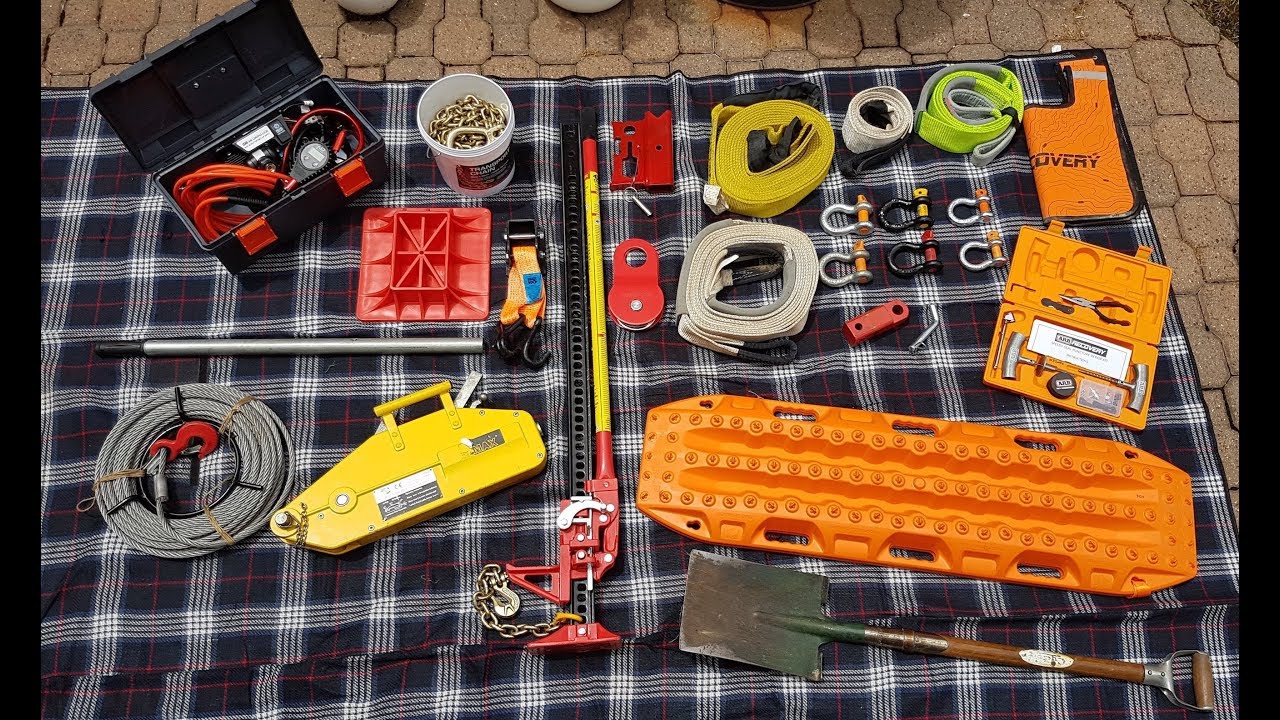RECOMMENDED OFF-ROAD GEAR
Before venturing into the off-road scene, make sure that yourself and your car are fully equipped to tackle the terrain. Here is the list of recommended off-road gear you’ll need to have in different scenarios.
It is worth mentioning that you should never venture alone in the desert.
Should you be in a situation where you need to be recovered by another car, or should you come across another off-roader who needs help in the desert, you will need some tools and equipment.
The list of equipment is non-exhaustive. However, based on our experience, we have come up with a list with recommendations.
The price range varies. We always advice not to go cheap since your safety depends on your kit. If you plan to be a regular in off-road, we would advise to “invest once and be safe”.
Recommended off-road gear
1) Kill switch |
|
* Disable traction control, ABS. It’s recommended to have additional kill switch to disable your air bags. If your car is under warranty then locate the ABS fuse and remove it while off-roading and put it back when driving on road. |
2) Skid plates |
|
* Skid plates are rugged protective shields designed to safeguard vulnerable components under your off-road vehicle from potential damage caused by rocks, debris, and rough terrain. This is not required for jeep wrangler as they have solid axle. Aluminum skid plate with a minimum of 6-10mm is recommended. Aluminum is also better than steel to dissipate heat. |
3) Tow hooks |
|
* Tow hook are required on your front and back, to recover you from stuck situation. Most of the cars comes inbuilt but few of them might not have rear tow hooks. Ensure you have tow hooks on both sides. Avoid using a tow trailer hitch that can break. This are dangerous and can hurt or injure people. |
4) Flag |
|
* The aim of an offroad safety flag is to improve visibility in the dunes, so that other members, or even another convoy can spot you from far away. Minimum height: 7-10ft (2-3m) above your car height (roof). Should be mounted vertically, preferably on roof or on side window. Should be sturdy and fixed properly to be visible through out the drive. |
5) Offroad Tires & Spare tire. |
|
* All-terrain tires are the optimal choice. What sets these tires apart is their wider footprint, a crucial feature that allows them to effectively “float” on the sand’s surface. This characteristic is essential because, unlike regular tires which might dig into the sand and hinder your progress, these specialized tires provide a smooth and efficient driving experience. |
6) Radio or walkie talkie |
|
* This device is compulsory to communicate in the desert and is easily available at dragon mart. A commonly used device is Baofeng UV 5R. |
7) Air compressor |
|
* To inflate your tires |
8) Tire deflator and Gauge |
|
* Recommended air pressure.* For HT tyres = 15 PSI* For AT tyres with normal rims = 13.5 PSI front and 11 PSI rear |
9) Soft Shackle |
|
* Due to its lightweight synthetic rope, soft shackles can give your 4WD recovery gear exceptional strength without adding additional weight or bulk. They are also safer then Metal or bow shackles that can fire and hurt people. |
10) Kinetic Rope |
|
* They are excellent at absorbing the shock of a recovery. As the rope stretches under tension, it transfers the energy from the recovering vehicle to the vehicle in need. Thus you can recover or pull a vehicle from ditches without damaging your bumper. These ropes cannot be used to tow a vehicle out of the desert as they are dangerous. |
11) Snatch strap ropes |
|
* These ropes are used to tow a vehicle out of the desert. These are dangerous and should not be used for quick pulls as they damage the bumper or can damage the vehicle |
12) Bottle jack |
|
* Bottle jack are recommended if you have lifted your vehicle and don’t have a stock vehicle jack. |
13) Off-Road base or jack plate |
|
* If you need to lift your car on the sand an off-road base is required to change your tires or fix tire pop outs |
14) Recovery Glove |
|
* The first step to any vehicle recovery is - put on your gloves! Gloves are an integral safety requirement for so many different situations that includes fixing your car when hot or topping up your radiator fluid. |
15) Garbage bags |
|
* We need to keep our deserts clean. Always keep garbage bags with you to collect waste. |
16) Tool box |
|
* It’s good to carry a tool box if you can. You might never know.* Few additional recommended items to carry* Duct tape, knife, glass breaker, tie clips, metal tie clips of different sizes, tie down straps |
17) Additional items for the car |
|
* It’s good to carry, extra engine oil, coolant and steering oil, just in case if you have any minor leaks or if your engine burns oil. |
18) Shovel |
|
* Used for removing sand for recovery and other purpose. |


















